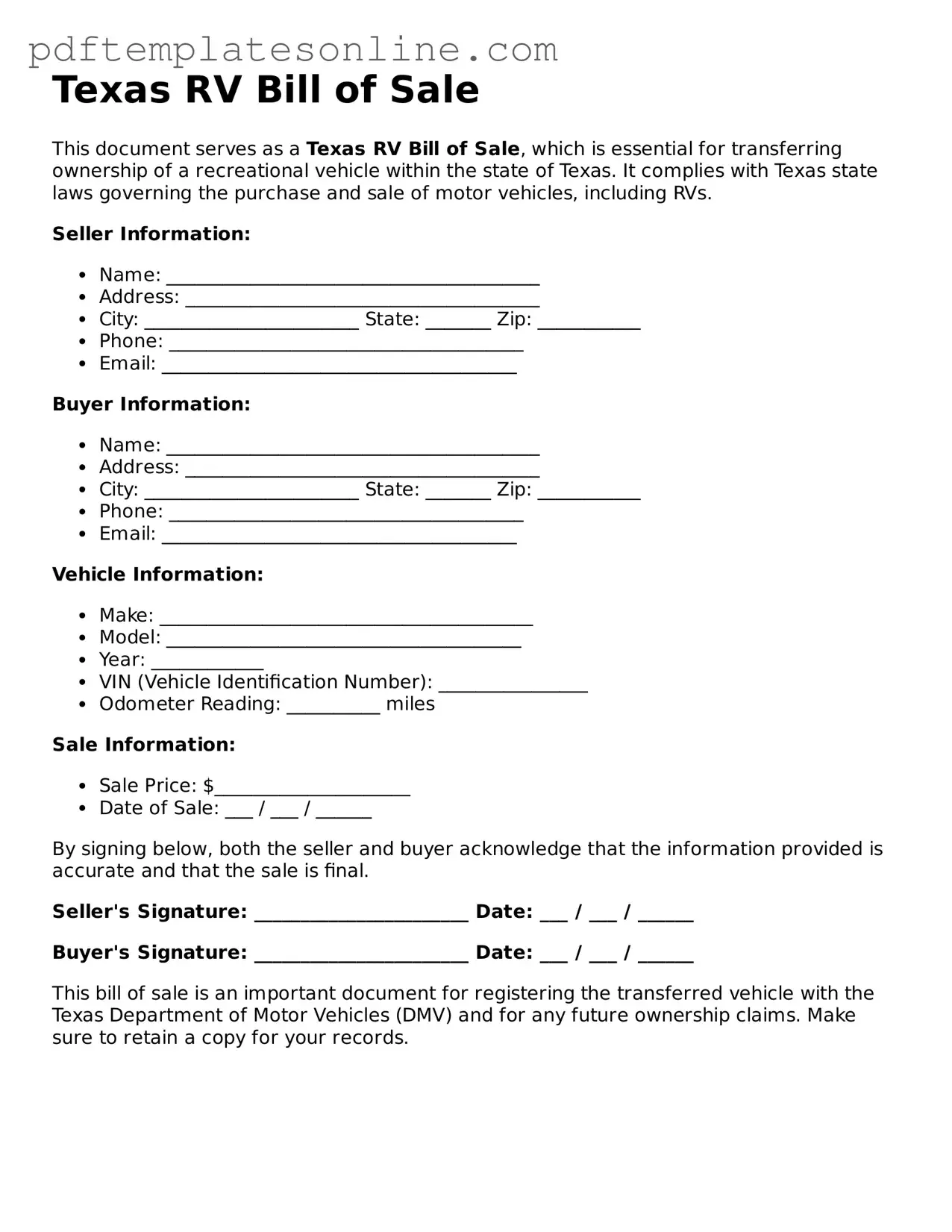Detailed Guide for Writing Texas RV Bill of Sale
Once you have the Texas RV Bill of Sale form ready, you can begin to fill it out. This document will require specific information about the RV, the seller, and the buyer. Ensuring accuracy and completeness is important, as this form serves as a legal record of the transaction.
- Obtain the form: Download the Texas RV Bill of Sale form from a reliable source or obtain a physical copy.
- Fill in the date: Write the date of the sale at the top of the form.
- Provide seller information: Enter the full name, address, and contact information of the seller.
- Provide buyer information: Enter the full name, address, and contact information of the buyer.
- Describe the RV: Include details such as the make, model, year, Vehicle Identification Number (VIN), and any other identifying features.
- Indicate the sale price: Clearly state the agreed-upon price for the RV.
- Include any warranties: If applicable, note any warranties or guarantees associated with the RV.
- Signatures: Both the seller and buyer must sign and date the form to validate the sale.
After completing the form, it is advisable to keep a copy for personal records. The buyer should also receive a copy for their documentation. This ensures both parties have proof of the transaction.
